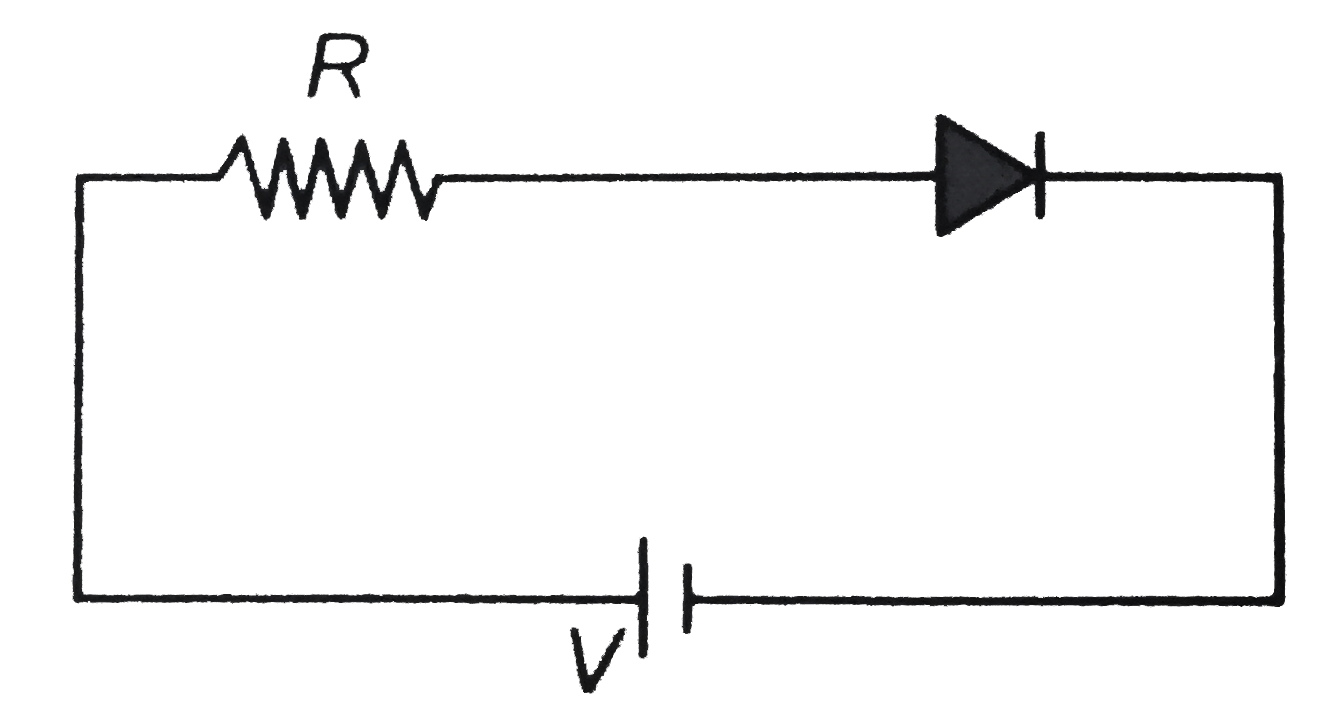For the given circuit of PN-junction diode, which of the following statements is correct?

A
In reverse biasing the voltage across R is 2 V
B
In forward biasing the voltage across R is 2 V
C
In forward biasing the voltage across R is V
D
In reverse biasing the voltage across R is V
Video Solution
Text Solution
The correct Answer is:C
For an ideal junction diode, the forward resistance is zero and hence there is no voltage drop across it, when it is forward biased. Hence voltage across R is V. Option (c). But in reverse biasing it does not conduct. It has infinite resistance.
∴ Voltage across the diode is V and voltage across R is zero.
|
Topper's Solved these Questions
Similar Questions
Knowledge Check
For the given circuit of p-n junction diode, which of the following statement is correct?
 AIn forward biasing the voltage across R is VBIn forward biasing the voltage acros R is 2VCIn reverse biasing the voltage acorss R is VDIn reverse biasing the voltage across R is 2V
AIn forward biasing the voltage across R is VBIn forward biasing the voltage acros R is 2VCIn reverse biasing the voltage acorss R is VDIn reverse biasing the voltage across R is 2VIn a PN -junction diode
AThe current in the reverse biased condition is generally very smallBThe current in the reverse biased condition is small but the forwards biased current is independent of the biase voltageCThe reverse biased current is srongly dependent on the applied biase voltage.DThe forward biased current is very small in comparision to reverse biased current.For the given circuit shown in figure which of the following statements is/are correct
 AThe equivalent capacitance between.points 1 and 2 is 15C11BThe equivalent capacitance between poiots 3 and 6 is 5C3CThe equivalent capacitance between points 1 and 3 is 15C14DThe equivalent capacitance between points 3 and 5 is 14C15
AThe equivalent capacitance between.points 1 and 2 is 15C11BThe equivalent capacitance between poiots 3 and 6 is 5C3CThe equivalent capacitance between points 1 and 3 is 15C14DThe equivalent capacitance between points 3 and 5 is 14C15
P-N junction diodes
View SolutionFor the given circuit of p-n junction diode which is correct?

View SolutionFor the circuit shows in Fig which of the following statements is //are correct?

View SolutionIn the circuit shown, which of the following statements is correct?

View SolutionIn a PN-junction
View Solution
